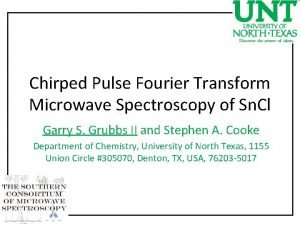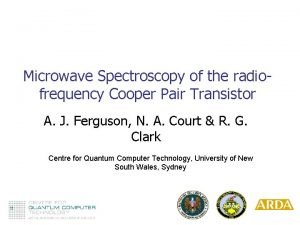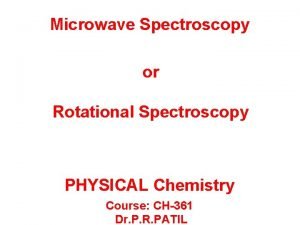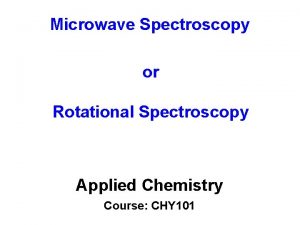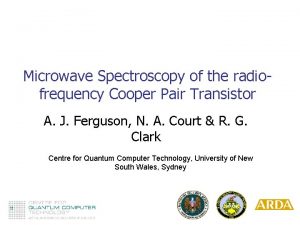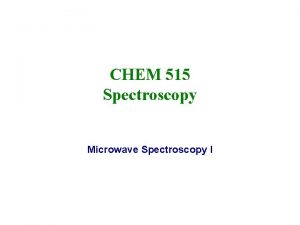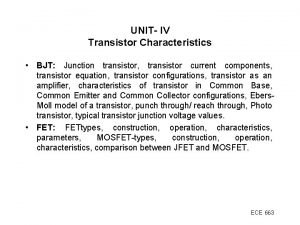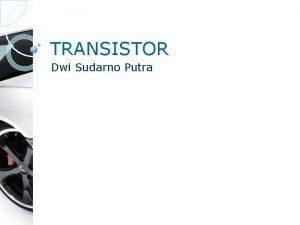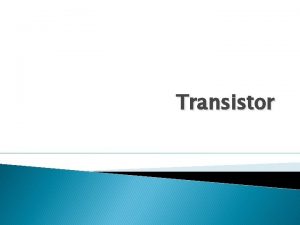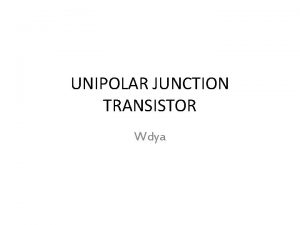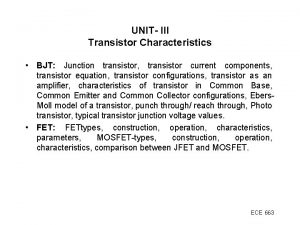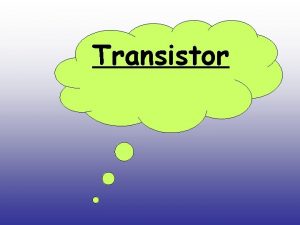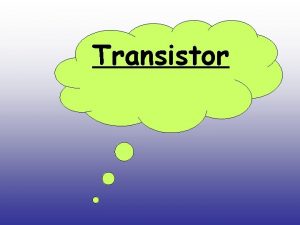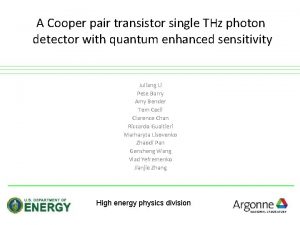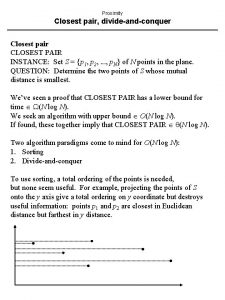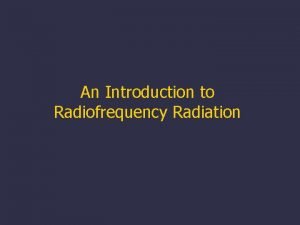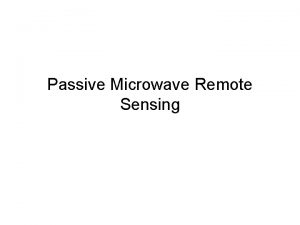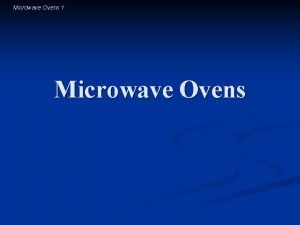Microwave Spectroscopy of the radiofrequency Cooper Pair Transistor

















- Slides: 17

Microwave Spectroscopy of the radiofrequency Cooper Pair Transistor A. J. Ferguson, N. A. Court & R. G. Clark Centre for Quantum Computer Technology, University of New South Wales, Sydney

Summary 1. Engineering the properties of superconducting aluminium 2. The single cooper pair transistor (SCPT) 3. Radio frequency operation of the SCPT 4. The superconducting transport processes 5. Microwave spectroscopy

Aluminium Devices Superconducting Qubits Y. Nakamura et al Nature 398 786 (1999) I. Chiorescu et al Science 299 1869 (2002) Single electron (Cooper-pair) transistors

Aluminium Materials Science Thin films: dramatic change in superconducting properties Bc Tc, D 10 1 Tc (K) B (T) 3 2 0. 1 1 0. 01 1 10 100 d (nm) 1000 Pauli-limited Bc: spin effects in superconducting SETs. A. J. Ferguson et al. on cond-mat soon 0. 3 0. 1 d-1 (nm-1) R. Meservey and P. M. Tedrow J. Appl. Phys. 42, 51 (1971) An alternative approach to O 2 doping J. Aumentado et al. , PRL 92, 066802 (2004)

The thin-film SCPT 7 nm islands used for these devices ~1 K of quasiparticle barrier 7 nm D ~ 200 m. V D ~ 300 m. V D ~ 200 m. V 30 nm 7 nm Films evaporated onto LN 2 cooled stage at 0. 1 nms-1 Electrically continuous films to 5 nm possible 30 nm

Single Cooper pair transistor EJ, C 1 EJ, C 2 In a 2 -band model Cg EC=e 2/(C 1+C 2+Cg) h EJ/EC=0. 5

Why do it? QP poisoning Careful filtering required to avoid non-equilibrium qps These qps tunnel on and ‘poison’ supercurrent G 1 G 2 2 D A QP barrier reduces poisoning rate 2 D 2 G 1/G 2~exp(D 2 -D 1/k. T) The device itself becomes a qp filter J. Aumentado et al. , Phys. Rev. Lett, 92, 066802 (2004) 2 D 1

rf-SET Main idea: LC circuit matches high resistance of SET towards 50 Ohms. rf (321 MHz) Amplitude of reflected signal (S 11), related to resistance (R) of SET. Reflected signal either diode or mixer detected. R. J. Schoelkopf et al. , Science 280 1238 (1998)

rf-SCPT Irf<Isw: R~0 W Irf>Isw: R>0 W Resistance is now Reff(Irf, Isw), use to find reflection coefficient in the usual way. Single shot: QP poisoning events Imin Imax J. Aumentado et al. , cond-mat�511026 Device I: Parameters R = 18 k. W EJ = 43 me. V Ec = 77 me. V EJ/EC = 0. 56

B=0 T Diamonds 2 e supercurrent enabled by thin-island 0 1 Imin DJQP 2 D 1 + 2 D 2 = 1. 05 me. V Ec=180 me. V RS=71 k. W EJ=11 me. V EJ/EC=0. 06 Imax 2 e ‘supercurrent’ Mixer out (a. u. ) Device II: Parameters

Resonant CP tunnelling E(n+2)-E(n)=0 E(n+2)-(E(n)-2 e. V)=0 V @B V A 2 0 Resonant Dissipative Resonant @A 2 1 3 2 4 3 B V 2 0 Resonant 2 0 Supercurrent occurs when resonance occurs for a CP on both junctions. DJQP resonance: QPs involved D. B. Haviland et al. , PRL 73, 1541 (1994)

Microwave Spectroscopy 40 GHz No m-waves -25 d. Bm -19 d. Bm Suppression of supercurrent Frequency dependent sidebands on resonant CPT D. J. Flees et al. , Phys. Rev. Lett. , 78, 4817 (1997) Y. Nakamura et al. , Czech. J. Phys. , 46, 2301 (1996) Y. Nakamura et al. , Phys. Rev. Lett. , 12, 799 (1997)

PAT + resonant CPT 2 g 1 g 0 g 2 2 0 0 2 0 2 0 P. K. Tien and J. P. Gordon, Phys Rev. 129, 647 (1963)

Frequency dependence Linear dependence of sidebands observed. Anti-crossing not observable since Ej=11 me. V (2. 6 GHz) 1 g: 186 me. V 2 g: 193 me. V c. f. 180 me. V from transport

Power dependence 30 GHz EC=180 me. V, D=300 me. V, EJ=11 me. V 0 1 2 Multiple g events occur Possibly QP states excited too J. M. Hergenrother et al. , Physica B 203, 327 (1994)

Conclusions • • • ~100 me. V of QP barrier possible with thin film Reduced QP poisoning allows 2 e-periodicity rf-measurement of 2 e supercurrent shown Observe individual QP poisoning events Combination of PAT and CP resonant tunneling observed

Future • Experimental: investigate charge noise of thin film • Experimental: further study individual QP poisoning events • Theoretical: look at rf-supercurrent measurement as electrometer (ultimate sensitivity etc)
 Chirped pulse fourier transform microwave spectroscopy
Chirped pulse fourier transform microwave spectroscopy What is microwave spectroscopy
What is microwave spectroscopy Microwave spectroscopy
Microwave spectroscopy Spectra of diatomic molecules
Spectra of diatomic molecules Python find pairs in list
Python find pairs in list Dof of screw pair
Dof of screw pair Trời xanh đây là của chúng ta thể thơ
Trời xanh đây là của chúng ta thể thơ Bảng số nguyên tố lớn hơn 1000
Bảng số nguyên tố lớn hơn 1000 Vẽ hình chiếu vuông góc của vật thể sau
Vẽ hình chiếu vuông góc của vật thể sau đặc điểm cơ thể của người tối cổ
đặc điểm cơ thể của người tối cổ Tỉ lệ cơ thể trẻ em
Tỉ lệ cơ thể trẻ em Các châu lục và đại dương trên thế giới
Các châu lục và đại dương trên thế giới ưu thế lai là gì
ưu thế lai là gì Hệ hô hấp
Hệ hô hấp Kể tên các môn thể thao
Kể tên các môn thể thao Tư thế ngồi viết
Tư thế ngồi viết Cái miệng bé xinh thế chỉ nói điều hay thôi
Cái miệng bé xinh thế chỉ nói điều hay thôi Hát kết hợp bộ gõ cơ thể
Hát kết hợp bộ gõ cơ thể
